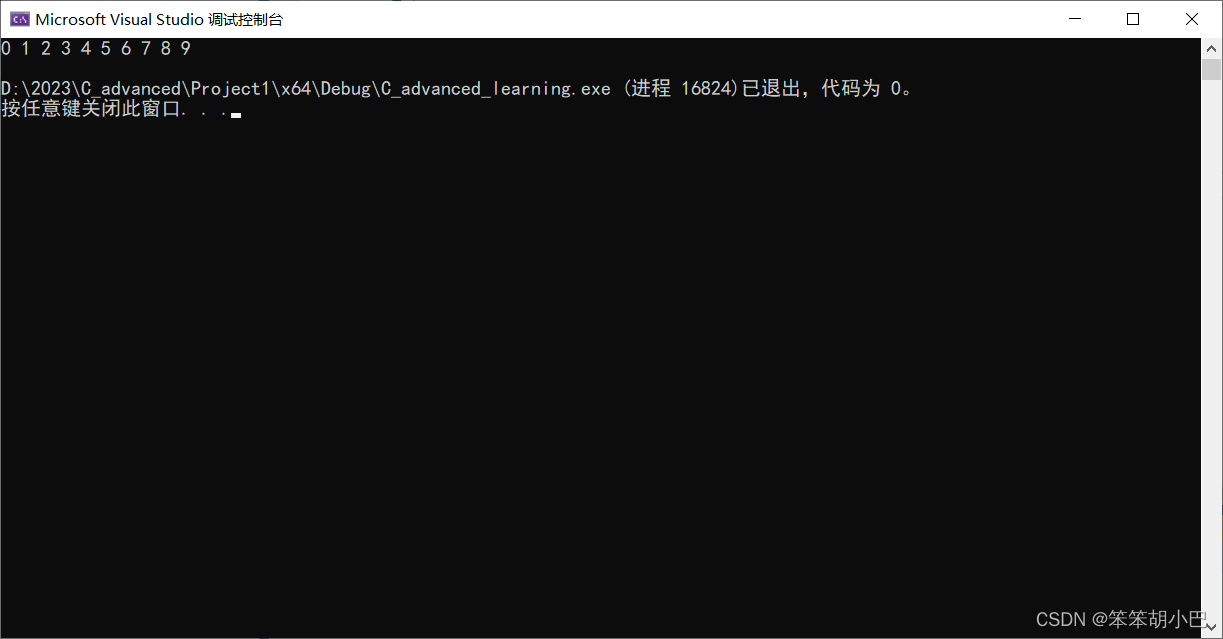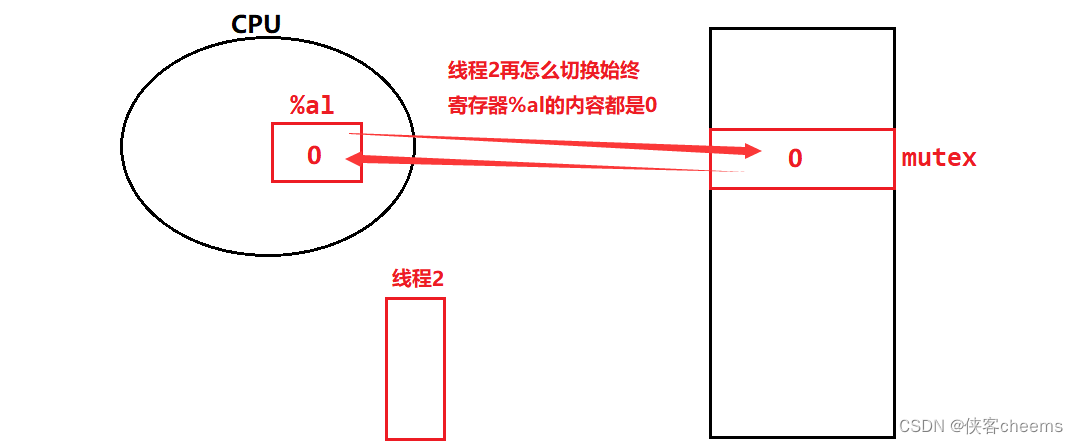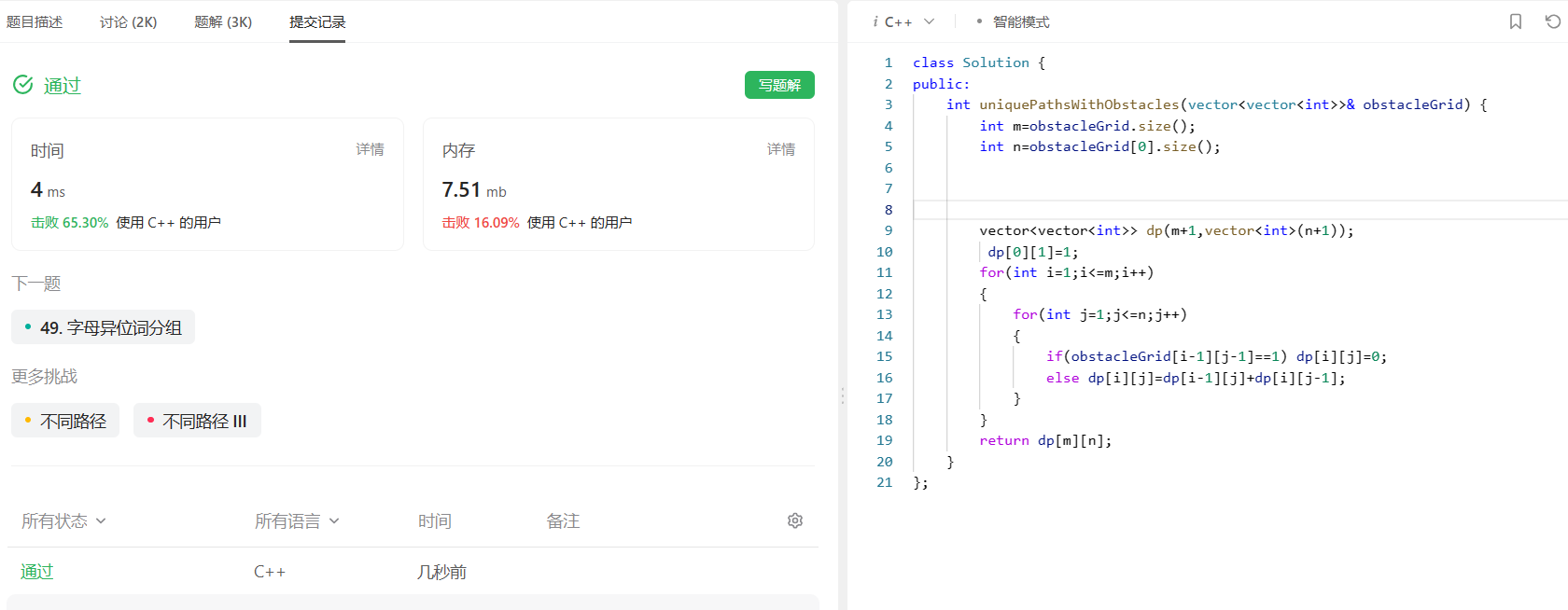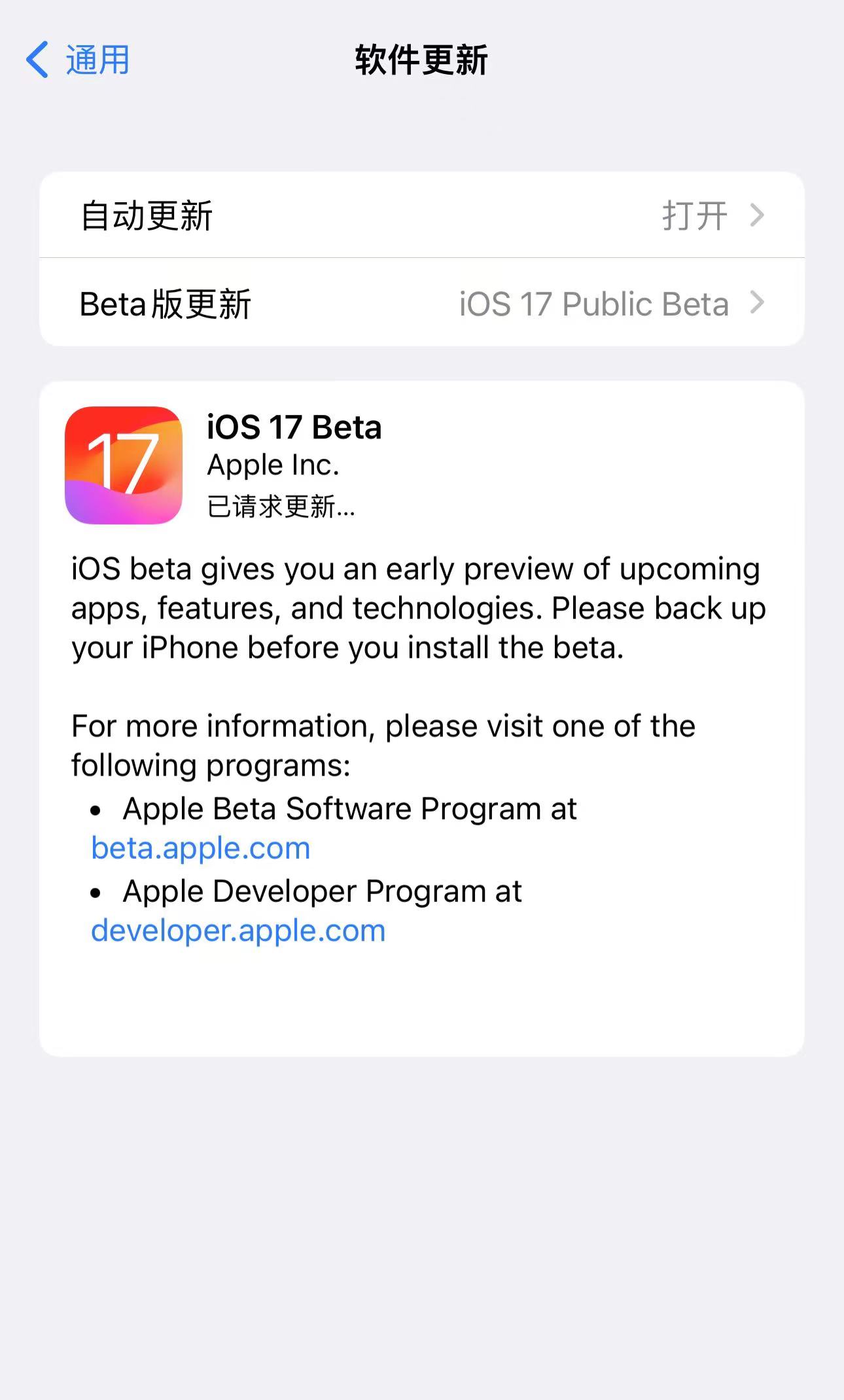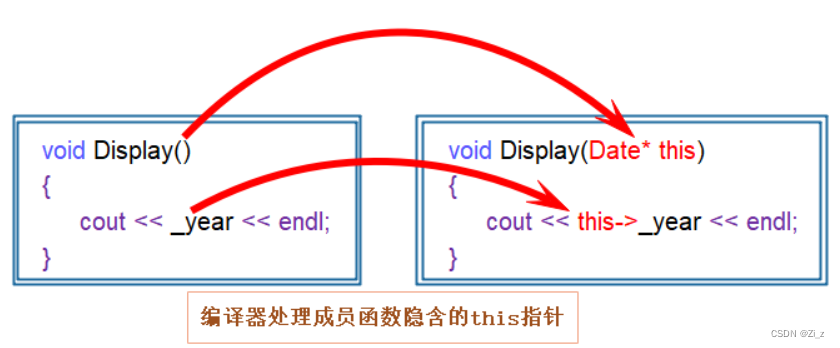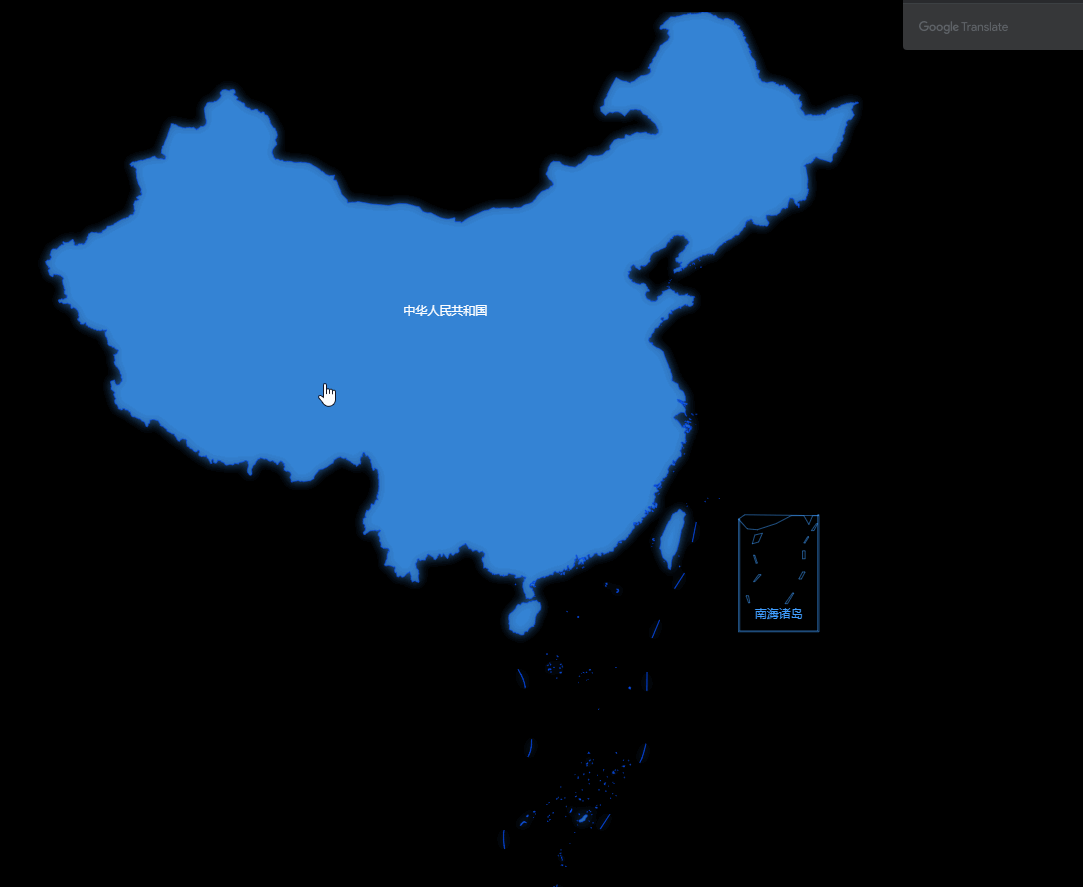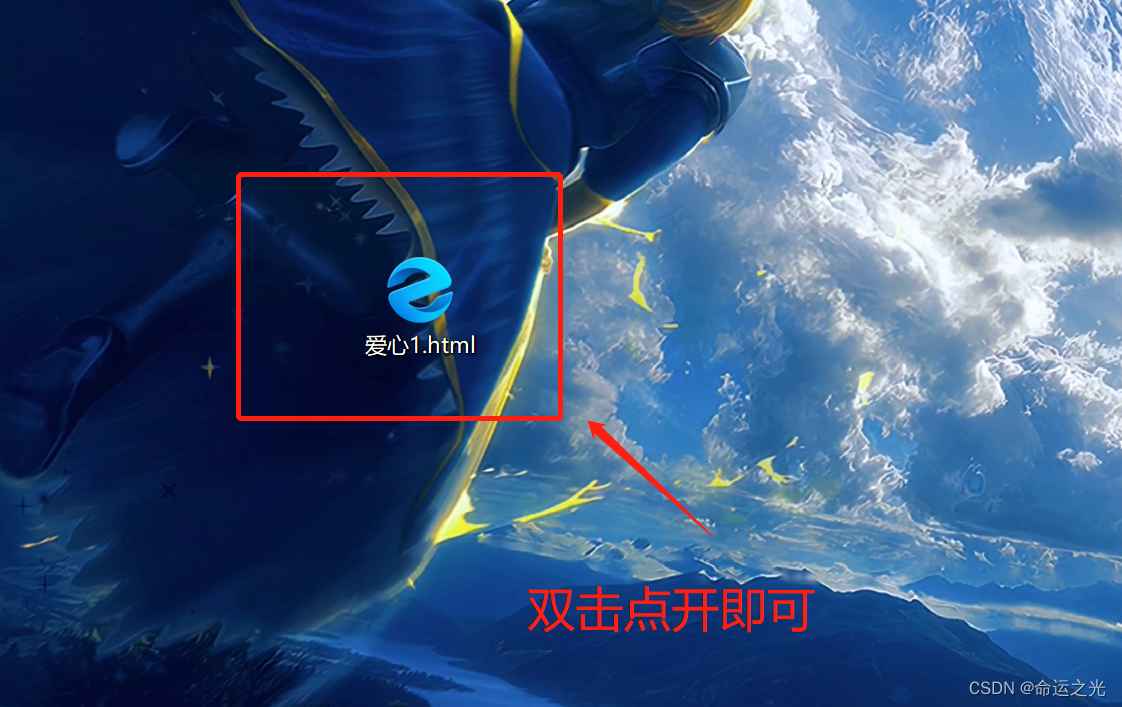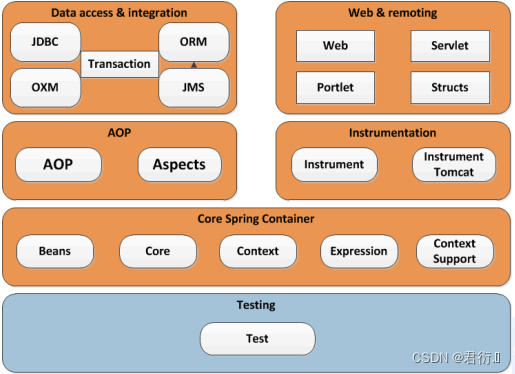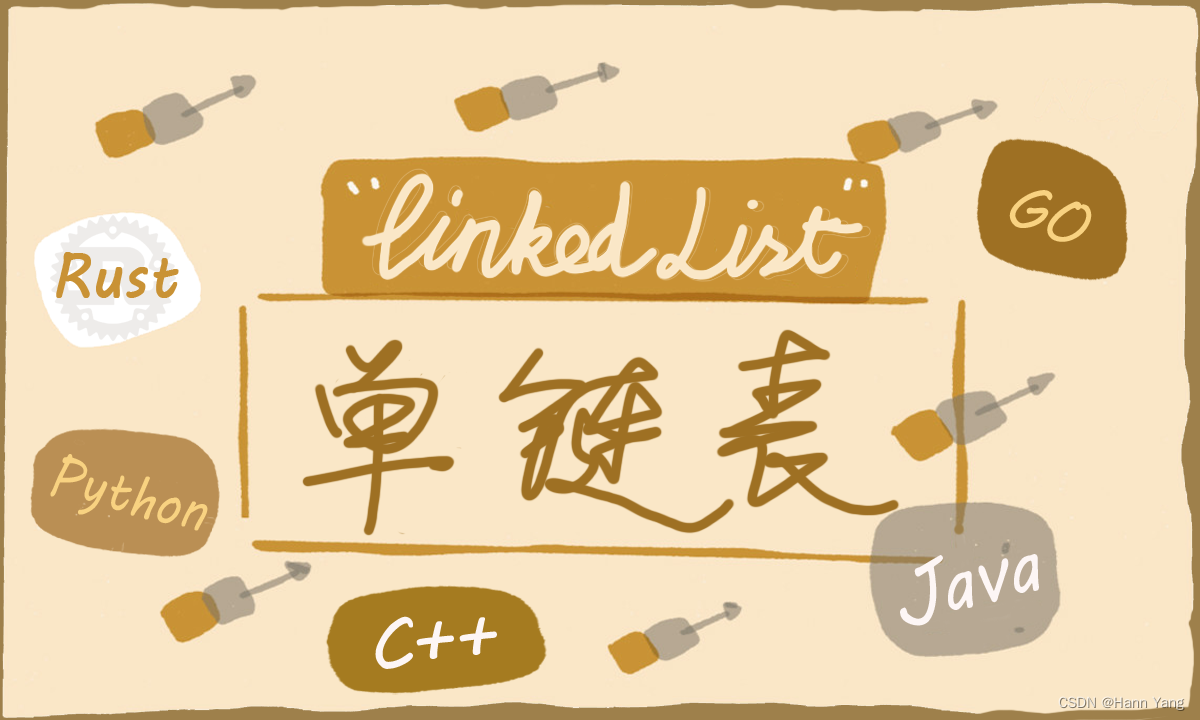
单链表
是一种链式数据结构,由一个头节点和一些指向下一个节点的指针组成。每个节点包含一个数据元素和指向下一个节点的指针。头节点没有数据,只用于表示链表的开始位置。
单链表的主要操作包括:
- 添加元素:在链表的头部添加新元素,需要修改头节点的指针。
- 删除元素:删除链表中的元素,需要修改头节点和其他节点的指针。
- 查找元素:在链表中查找某个元素,需要遍历整个链表。
- 遍历链表:按照链表的顺序依次访问每个元素,需要遍历整个链表。
单链表相对于数组的优点是插入和删除元素时不需要移动其他元素,时间复杂度为O(1)。但是,在查找元素时,单链表比数组要慢,时间复杂度为O(n)。
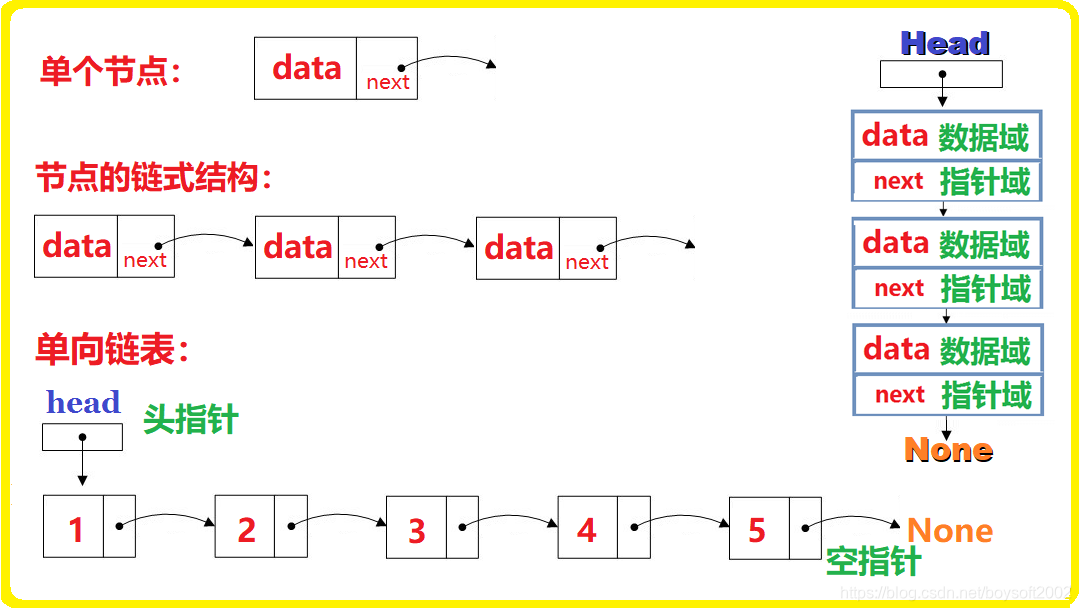
本文总结了 C++、Java、Python、Go、Rust 五种语言的单链表的表达:
C++
c++语言既可以用struct也能用class来表示链表节点,类可以定义方法调用相对方便。另外C++类需要自定义析构函数用以退出时释放节点所占空间,其它语言有自动的垃圾回收机制。
struct
// 定义结构体 Node,表示链表中的节点
struct Node {
int data; // 节点的数据
Node* next; // 指向下一个节点的指针
};
// 定义类 LinkedList,表示链表
class LinkedList {
private:
Node* head; // 指向链表头节点的指针
}
代码:
#include <iostream>
using namespace std;
// 定义结构体 Node,表示链表中的节点
struct Node {
int data; // 节点的数据
Node* next; // 指向下一个节点的指针
};
// 定义类 LinkedList,表示链表
class LinkedList {
private:
Node* head; // 指向链表头节点的指针
public:
// 构造函数,初始化链表为空链表
LinkedList() {
head = NULL;
}
// 析构函数,释放链表中的所有节点
~LinkedList() {
Node* curr = head;
while (curr != NULL) {
Node* next = curr->next;
delete curr;
curr = next;
}
}
// 在链表头部添加一个新节点
void add(int value) {
Node* newNode = new Node;
newNode->data = value;
newNode->next = head;
head = newNode;
}
// 在链表尾部添加一个新节点
void push(int value) {
Node* newNode = new Node;
newNode->data = value;
newNode->next = NULL;
if (head == NULL) {
head = newNode;
} else {
Node* curr = head;
while (curr->next != NULL) {
curr = curr->next;
}
curr->next = newNode;
}
}
// 删除最后一个节点,并返回该节点的数据
int pop() {
if (head == NULL) {
return -1;
} else if (head->next == NULL) {
int data = head->data;
delete head;
head = NULL;
return data;
} else {
Node* curr = head;
while (curr->next->next != NULL) {
curr = curr->next;
}
int data = curr->next->data;
delete curr->next;
curr->next = NULL;
return data;
}
}
// 遍历链表,打印每个节点的数据
void traverse() {
Node* curr = head;
while (curr != NULL) {
cout << curr->data << "->";
curr = curr->next;
}
cout << "nil" << endl;
}
};
int main() {
LinkedList list;
list.traverse(); // 打印空链表 nil
list.add(1); // 在链表头部添加节点 1
list.traverse(); // 打印链表 1->nil
list.add(2); // 在链表头部添加节点 2
list.traverse(); // 打印链表 2->1->nil
list.add(3); // 在链表头部添加节点 3
list.traverse(); // 打印链表 3->2->1->nil
list.push(4); // 在链表尾部添加节点 4
list.traverse(); // 打印链表 3->2->1->4->nil
list.push(5); // 在链表尾部添加节点 5
list.traverse(); // 打印链表 3->2->1->4->5->nil
cout << list.pop() << endl; // 删除尾节点,并输出节点数据
list.traverse(); // 打印链表 3->2->1->4->nil
cout << list.pop() << endl; // 删除尾节点,并输出节点数据
list.traverse(); // 打印链表 3->2->1->nil
return 0;
}class
// 定义类 Node,表示链表中的节点
class Node {
public:
int data;
Node* next;
Node(int value) {
data = value;
next = NULL;
}
};
// 定义类 LinkedList,表示链表
class LinkedList {
private:
Node* head; // 指向链表头节点的指针
};
代码:
#include <iostream>
using namespace std;
// 定义类 Node,表示链表中的节点
class Node {
public:
int data;
Node* next;
Node(int value) {
data = value;
next = NULL;
}
};
// 定义类 LinkedList,表示链表
class LinkedList {
private:
Node* head; // 指向链表头节点的指针
public:
// 构造函数,初始化链表为空链表
LinkedList() {
head = NULL;
}
// 析构函数,释放链表中的所有节点
~LinkedList() {
Node* curr = head;
while (curr != NULL) {
Node* next = curr->next;
delete curr;
curr = next;
}
}
// 在链表头部添加一个新节点
void add(int value) {
Node* newNode = new Node(value);
newNode->next = head;
head = newNode;
}
// 在链表尾部添加一个新节点
void push(int value) {
Node* newNode = new Node(value);
newNode->next = NULL;
if (head == NULL) {
head = newNode;
} else {
Node* curr = head;
while (curr->next != NULL) {
curr = curr->next;
}
curr->next = newNode;
}
}
// 删除最后一个节点,并返回该节点的数据
int pop() {
if (head == NULL) {
return -1;
} else if (head->next == NULL) {
int data = head->data;
delete head;
head = NULL;
return data;
} else {
Node* curr = head;
while (curr->next->next != NULL) {
curr = curr->next;
}
int data = curr->next->data;
delete curr->next;
curr->next = NULL;
return data;
}
}
// 遍历链表,打印每个节点的数据
void traverse() {
Node* curr = head;
while (curr != NULL) {
cout << curr->data << "->";
curr = curr->next;
}
cout << "nil" << endl;
}
};
int main() {
LinkedList list;
list.traverse(); // 打印空链表 nil
list.add(1); // 在链表头部添加节点 1
list.traverse(); // 打印链表 1->nil
list.add(2); // 在链表头部添加节点 2
list.traverse(); // 打印链表 2->1->nil
list.add(3); // 在链表头部添加节点 3
list.traverse(); // 打印链表 3->2->1->nil
list.push(4); // 在链表尾部添加节点 4
list.traverse(); // 打印链表 3->2->1->4->nil
list.push(5); // 在链表尾部添加节点 5
list.traverse(); // 打印链表 3->2->1->4->5->nil
cout << list.pop() << endl; // 删除尾节点,并输出节点数据
list.traverse(); // 打印链表 3->2->1->4->nil
cout << list.pop() << endl; // 删除尾节点,并输出节点数据
list.traverse(); // 打印链表 3->2->1->nil
return 0;
}Java
Java没有跟C或Go类似的struct结构体,只有用类class来表达。

class
public class LinkedList {
public class Node {
public int data;
public Node next;
public Node(int value) {
data = value;
next = null;
}
}
public LinkedList() {
head = null;
}
}
代码:
public class LinkedList {
public class Node {
public int data;
public Node next;
public Node(int value) {
data = value;
next = null;
}
}
public LinkedList() {
head = null;
}
private Node head;
// 在链表头部添加一个新的节点
public void add(int value) {
Node newNode = new Node(value);
newNode.next = head;
head = newNode;
}
// 在链表尾部添加一个新的节点
public void push(int value) {
Node newNode = new Node(value);
if (head == null) {
head = newNode;
} else {
Node curr = head;
while (curr.next != null) {
curr = curr.next;
}
curr.next = newNode;
}
}
// 删除尾节点,并返回该节点的数据
public int pop() {
if (head == null) {
return -1;
} else if (head.next == null) {
int data = head.data;
head = null;
return data;
} else {
Node curr = head;
while (curr.next.next != null) {
curr = curr.next;
}
Node tail = curr.next;
curr.next = null;
return tail.data;
}
}
// 遍历链表,打印每个节点的数据
public void traverse() {
Node curr = head;
while (curr != null) {
System.out.print(curr.data + "->");
curr = curr.next;
}
System.out.println("nil");
}
public static void main(String[] args) {
LinkedList list = new LinkedList();
list.traverse(); // 打印空链表 nil
list.add(1); // 在链表头部添加节点 1
list.traverse(); // 打印链表 1->nil
list.add(2); // 在链表头部添加节点 2
list.traverse(); // 打印链表 2->1->nil
list.add(3); // 在链表头部添加节点 3
list.traverse(); // 打印链表 3->2->1->nil
list.push(4); // 在链表尾部添加节点 4
list.traverse(); // 打印链表 3->2->1->4->nil
list.push(5); // 在链表尾部添加节点 5
list.traverse(); // 打印链表 3->2->1->4->5->nil
System.out.println(list.pop()); // 删除尾节点,并输出节点数据
list.traverse(); // 打印链表 3->2->1->4->nil
System.out.println(list.pop()); // 删除尾节点,并输出节点数据
list.traverse(); // 打印链表 3->2->1->nil
}
}Python
Python也没有struct结构体,只能用类class来表达。而且python是动态类型语言,变量在创建时无需显式指定类型,也没有指针概念。

class
class Node:
def __init__(self, data):
self.data = data # 节点的数据
self.next = None # 节点的下一个指针,初始为空
class LinkedList:
def __init__(self):
self.head = None # 链表的头指针,初始为空
代码:
class Node:
def __init__(self, data):
self.data = data # 节点的数据
self.next = None # 节点的下一个指针,初始为空
class LinkedList:
def __init__(self):
self.head = None # 链表的头指针,初始为空
def add(self, data):
# 在链表头部插入一个新节点
newNode = Node(data)
newNode.next = self.head
self.head = newNode
def push(self, data):
# 在链表尾部添加一个新节点
newNode = Node(data)
if self.head is None:
self.head = newNode
else:
curr = self.head
while curr.next is not None:
curr = curr.next
curr.next = newNode
def pop(self):
# 删除尾节点,并返回该节点的值
if self.head is None:
return None
if self.head.next is None:
data = self.head.data
self.head = None
return data
curr = self.head
while curr.next.next is not None:
curr = curr.next
tail = curr.next
curr.next = None
return tail.data
def traverse(self):
# 遍历链表,打印每个节点的数据
curr = self.head
while curr is not None:
print(curr.data, end='->')
curr = curr.next
print('nil')
if __name__ == '__main__':
head = LinkedList() # 创建链表
head.traverse() # 遍历空链表
head.add(1) # 在链表头部添加节点 1
head.traverse() # 遍历链表 1->nil
head.add(2) # 在链表头部添加节点 2
head.traverse() # 遍历链表 2->1->nil
head.add(3) # 在链表头部添加节点 3
head.traverse() # 遍历链表 3->2->1->nil
head.push(4) # 在链表尾部添加节点 4
head.traverse() # 遍历链表 3->2->1->4->nil
head.push(5) # 在链表尾部添加节点 5
head.traverse() # 遍历链表 3->2->1->4->5->nil
print(head.pop()) # 删除尾节点,并输出节点数据
head.traverse() # 打印链表 3->2->1->4->nil
print(head.pop()) # 删除尾节点,并输出节点数据
head.traverse() # 打印链表 3->2->1->nil
Golang
Go没有class类,使用结构体 struct 来代替类。结构体可以包含字段(成员变量),并且可以定义方法(成员函数)来操作结构体的数据。

struct
type Node struct {
data int
next *Node
}
type LinkedList struct {
head *Node
}
// 创建一个新的节点
func new(value int) *Node {
return &Node{
data: value,
next: nil,
}
}
代码:
package main
import "fmt"
type Node struct {
data int
next *Node
}
type LinkedList struct {
head *Node
}
// 创建一个新的节点
func new(value int) *Node {
return &Node{
data: value,
next: nil,
}
}
// 在链表头部添加一个新节点
func (list *LinkedList) add(value int) {
newNode := new(value)
newNode.next = list.head
list.head = newNode
}
// 在链表尾部添加一个新节点
func (list *LinkedList) push(value int) {
newNode := new(value)
if list.head == nil {
list.head = newNode
} else {
curr := list.head
for curr.next != nil {
curr = curr.next
}
curr.next = newNode
}
}
// 删除尾节点,并返回该节点的值
func (list *LinkedList) pop() int {
if list.head == nil {
return -1
} else if list.head.next == nil {
data := list.head.data
list.head = nil
return data
} else {
curr := list.head
for curr.next.next != nil {
curr = curr.next
}
tail := curr.next
curr.next = nil
return tail.data
}
}
// 遍历链表,打印每个节点的数据
func (list *LinkedList) traverse() {
curr := list.head
for curr != nil {
fmt.Printf("%d->", curr.data)
curr = curr.next
}
fmt.Println("nil")
}
func main() {
list := LinkedList{}
list.traverse() // 打印空链表 nil
list.add(1) // 在链表头部添加节点 1
list.traverse() // 打印链表 1->nil
list.add(2) // 在链表头部添加节点 2
list.traverse() // 打印链表 2->1->nil
list.add(3) // 在链表头部添加节点 3
list.traverse() // 打印链表 3->2->1->nil
list.push(4) // 在链表尾部添加节点 4
list.traverse() // 打印链表 3->2->1->4->nil
list.push(5) // 在链表尾部添加节点 5
list.traverse() // 打印链表 3->2->1->4->5->nil
fmt.Println(list.pop()) // 删除尾节点,并打印数据
list.traverse() // 打印链表 3->2->1->4->nil
fmt.Println(list.pop()) // 删除尾节点,并打印数据
list.traverse() // 打印链表 3->2->1->nil
}
Rust
Rust中也没有类的概念,但它提供了结构体 struct 和 trait 两种重要的机制来实现面向对象的编程风格。结构体用于定义数据结构,而 trait 则用于定义方法集合。
另外在Rust中,一般不使用unsafe指针std::ptr来操作链表,而是 Option 类型来表示链表指针,它代表的值可以存在(Some)也可以不存在(None)。Option 类型被广泛用于处理可能为空的值,以避免出现空指针异常。
struct
struct Node {
data: i32,
next: Option<Box<Node>>,
}
impl Node {
fn new(value: i32) -> Node {
Node { data: value, next: None }
}
}
struct LinkedList {
head: Option<Box<Node>>,
}
impl LinkedList {
fn new() -> LinkedList {
LinkedList { head: None }
}
}
代码:
struct Node {
data: i32,
next: Option<Box<Node>>,
}
impl Node {
fn new(value: i32) -> Node {
Node { data: value, next: None }
}
}
struct LinkedList {
head: Option<Box<Node>>,
}
impl LinkedList {
fn new() -> LinkedList {
LinkedList { head: None }
}
// 在链表头部添加一个新节点
fn add(&mut self, value: i32) {
let mut new_node = Box::new(Node::new(value));
new_node.next = self.head.take();
self.head = Some(new_node);
}
// 在链表尾部添加一个新节点
fn push(&mut self, value: i32) {
let new_node = Box::new(Node::new(value));
let mut curr = &mut self.head;
while let Some(node) = curr {
curr = &mut node.next;
}
*curr = Some(new_node);
}
// 删除尾节点,并返回该节点的数据
fn pop(&mut self) -> Option<i32> {
if self.head.is_none() {
return None;
}
if self.head.as_ref().unwrap().next.is_none() {
let data = self.head.take().unwrap().data;
return Some(data);
}
let mut curr = self.head.as_mut().unwrap();
while curr.next.as_ref().unwrap().next.is_some() {
curr = curr.next.as_mut().unwrap();
}
let data = curr.next.take().unwrap().data;
Some(data)
}
// 遍历链表,打印每个节点的数据
fn traverse(&self) {
let mut curr = &self.head;
while let Some(node) = curr {
print!("{}->", node.data);
curr = &node.next;
}
println!("nil");
}
}
fn main() {
let mut list = LinkedList::new();
list.traverse(); // 打印空链表 nil
list.add(1); // 在链表头部添加节点 1
list.traverse(); // 打印链表 1->nil
list.add(2); // 在链表头部添加节点 2
list.traverse(); // 打印链表 2->1->nil
list.add(3); // 在链表头部添加节点 3
list.traverse(); // 打印链表 3->2->1->nil
list.push(4); // 在链表尾部添加节点 4
list.traverse(); // 打印链表 3->2->1->4->nil
list.push(5); // 在链表尾部添加节点 5
list.traverse(); // 打印链表 3->2->1->4->5->nil
println!("{}", list.pop().unwrap()); // 删除尾节点,并输出节点数据
list.traverse(); // 打印链表 3->2->1->4->nil
println!("{}", list.pop().unwrap()); // 删除尾节点,并输出节点数据
list.traverse(); // 打印链表 3->2->1->nil
}struct unsafe
struct Node {
data: i32,
next: *mut Node,
}
impl Node {
fn new(value: i32) -> Node {
Node { data: value, next: std::ptr::null_mut() }
}
}
struct LinkedList {
head: *mut Node,
}
impl LinkedList {
fn new() -> LinkedList {
LinkedList { head: std::ptr::null_mut() }
}
}
代码:
struct Node {
data: i32,
next: *mut Node,
}
impl Node {
fn new(value: i32) -> Node {
Node { data: value, next: std::ptr::null_mut() }
}
}
struct LinkedList {
head: *mut Node,
}
impl LinkedList {
fn new() -> LinkedList {
LinkedList { head: std::ptr::null_mut() }
}
fn add(&mut self, value: i32) {
let mut new_node = Box::new(Node::new(value));
new_node.next = self.head;
self.head = Box::into_raw(new_node);
}
fn push(&mut self, value: i32) {
let new_node = Box::new(Node::new(value));
let mut curr = &mut self.head;
while !(*curr).is_null() {
curr = unsafe { &mut (**curr).next };
}
*curr = Box::into_raw(new_node);
}
fn pop(&mut self) -> Option<i32> {
if self.head.is_null() {
return None;
}
let mut curr = self.head;
let mut prev = std::ptr::null_mut();
while unsafe { !(*curr).next.is_null() } {
prev = curr;
curr = unsafe { (*curr).next };
}
let data = unsafe { Box::from_raw(curr) }.data;
if prev.is_null() {
self.head = std::ptr::null_mut();
} else {
unsafe { (*prev).next = std::ptr::null_mut(); }
}
Some(data)
}
fn traverse(&self) {
let mut curr = self.head;
while !curr.is_null() {
unsafe {
print!("{}->", (*curr).data);
curr = (*curr).next;
}
}
println!("nil");
}
fn cleanup(&mut self) {
let mut curr = self.head;
while !curr.is_null() {
let next = unsafe { (*curr).next };
unsafe { Box::from_raw(curr) };
curr = next;
}
}
}
fn main() {
let mut list = LinkedList::new();
list.traverse(); // 打印空链表 nil
list.add(1);
list.traverse();
list.add(2);
list.traverse();
list.add(3);
list.traverse();
list.push(4);
list.traverse();
list.push(5);
list.traverse();
println!("{}", list.pop().unwrap());
list.traverse();
println!("{}", list.pop().unwrap());
list.traverse();
list.cleanup();
}
cleanup()相当于析构函数,用于释放链表所占空间。
以上所有示例代码的输出都相同:
nil
1->nil
2->1->nil
3->2->1->nil
3->2->1->4->nil
3->2->1->4->5->nil
5
3->2->1->4->nil
4
3->2->1->nil
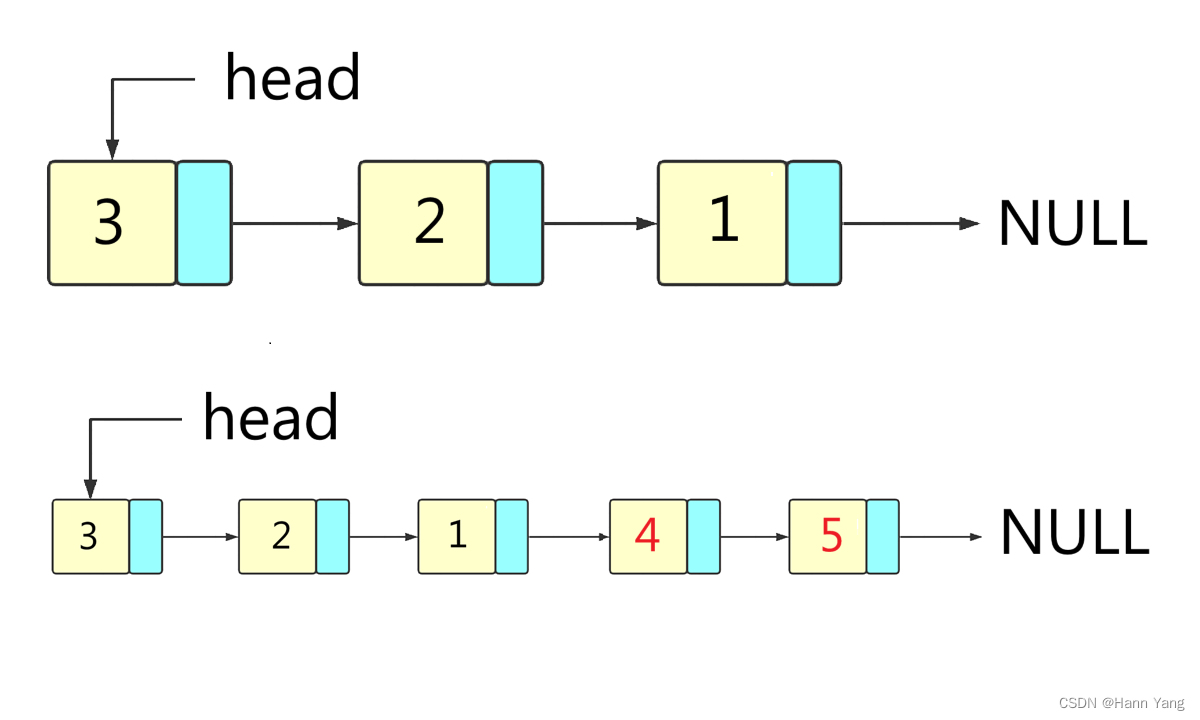
其中,Rust的节点值有点特殊,使用了Some类型。比如:
使用println!("{:?}", list.pop()); 不需要pop()后面的.unwrap(),返回Some(n);当链表为空时,直接返回None。
完

